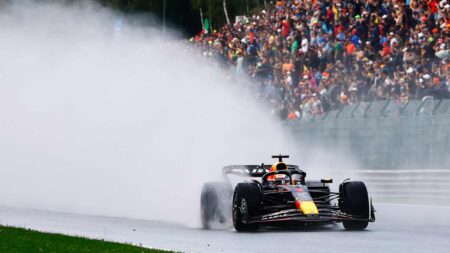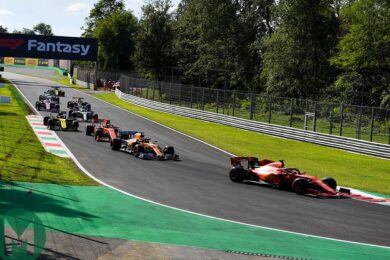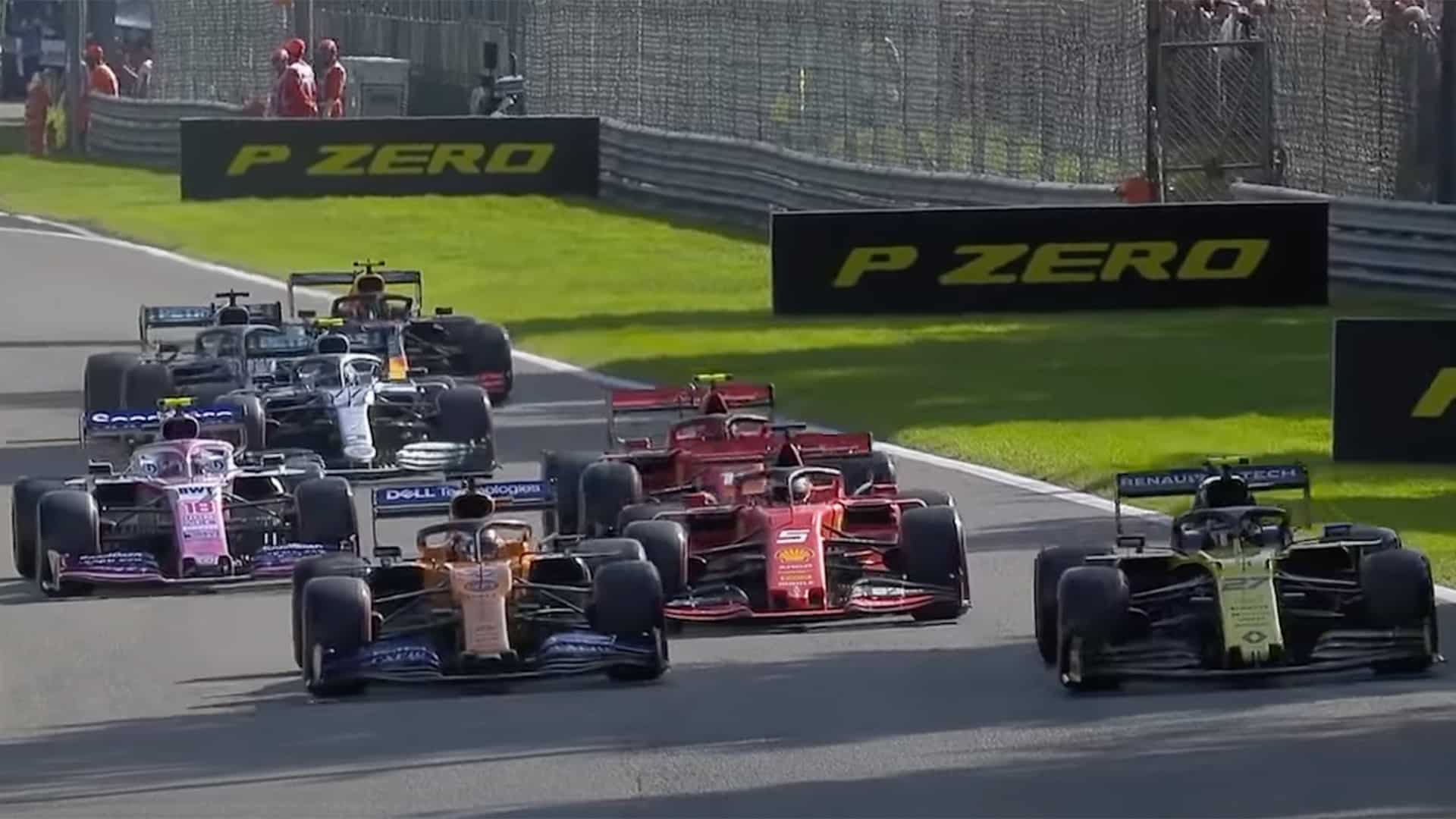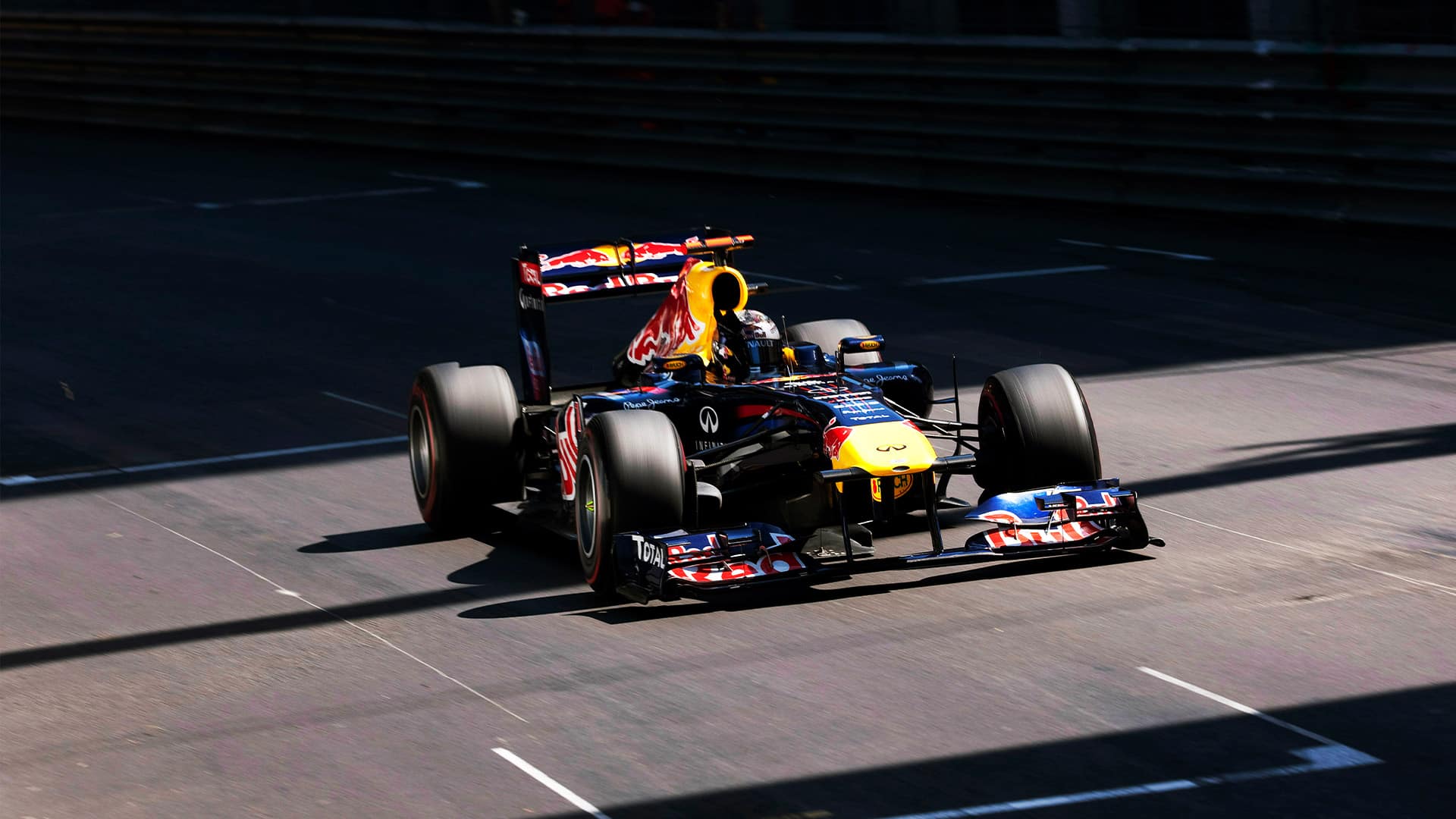The prospect of attempting to curb Red Bull was raised earlier this year when F1 CEO Stefano Domenicali responded to say that the series would not step in and “manipulate” the championship in order to increase the amount of on-track action.
However, 12 consecutive Red Bull race victories later, and with a global audience that shows signs of tiring of the same predictable storyline, it wouldn’t be surprising if Domenicali had a change of heart.
And DRS offers a straightforward solution. Speed data published by Auto Motor und Sport reveals why.
At the Belgian Grand Prix, Perez’s Red Bull reached a top speed of 320.5km/h (199.1mph) with the rear wing closed at the end of the Kemmel Straight. When compared with Ferrari (318.3km/h — 197.8mph) and Mercedes (319.8km/h — 198.7mph), it’s a slight advantage that could be overcome by the trailing field.
But with the DRS flap open, the gap widens. Perez reached 340.8km/h (211.8mph) approaching Les Combes — 20.3km/h (12.6mph) faster. Ferrari gained an extra 19km/h (11.8mph), while Mercedes – running a higher wing – only gained an extra 13km/h (8mph).
This margin of advantage is one element that puts Red Bull out of reach, and banning DRS during qualifying should produce a closer qualifying battle. But don’t we have that already?
| Team | Top speed with DRS (km/h) | Top speed without DRS (km/h) | Difference (km/h) |
| Red Bull | 340.8 | 320.5 | 20.3 |
| Ferrari | 337.3 | 318.3 | 19 |
| McLaren | 326.9 | 311.6 | 15.3 |
| Mercedes | 333 | 319.8 | 13.2 |
Source: AMuS

DRS opened. DRS closed. The result remains the same…
Grand Prix Photo
Qualifying has arguably been the highlight of F1 race weekends in 2023, supplying much of the drama before the lights go out on Sunday afternoons. In Baku, Charles Leclerc captured consecutive pole positions for the sprint race and the grand prix – besting a second-placed Red Bull by two-tenths in each session. In Monaco, the top three finishers were separated by just over a tenth – Verstappen down on his time in sector one and two before defying all odds with a flawless run up to the line. In Austria, Leclerc threw everything at an on-the limit lap only to be bested by Verstappen again – the Dutchman’s winning margin this time: only four-hundredths of a second.





